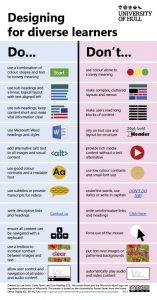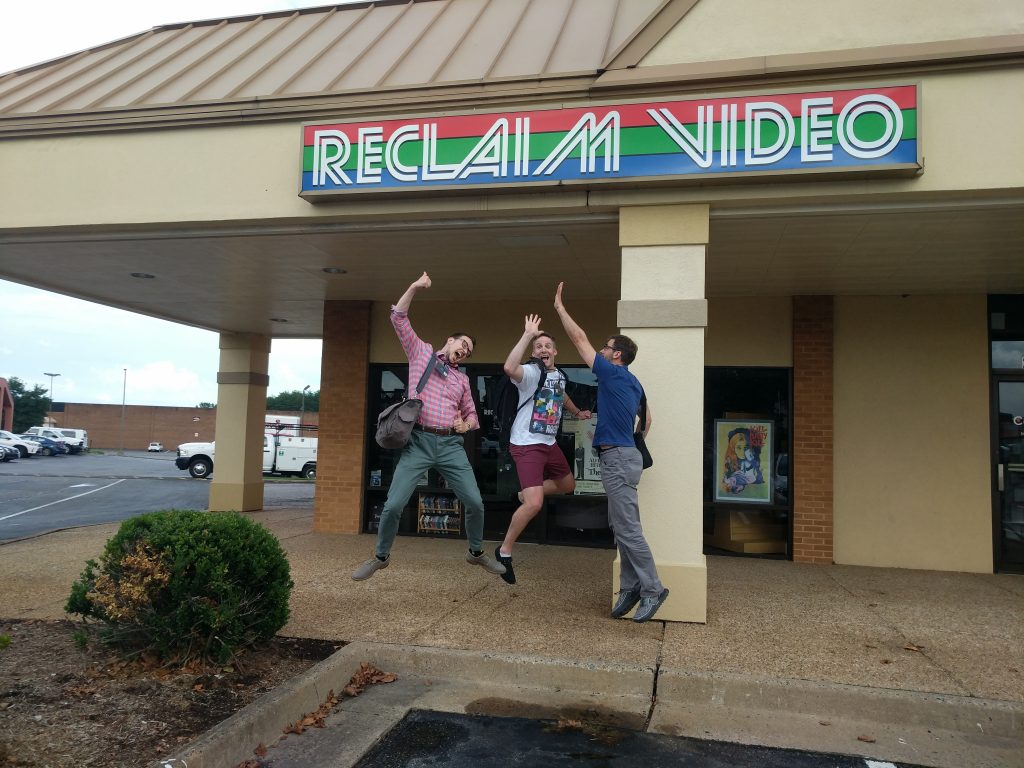A few years ago, I worked in a really special team. We were amazing. Loads of talented people, coming together to lead change. And that’s what we did. Again, and again, and again. Until we got shut down (another story for another time).
Continue reading “Being seen”What’s in a name?
I recently posted to twitter an observation that institutional systems tended to be named in one of three potential naming conventions.
Continue reading “What’s in a name?”Team Alpecin 2020
This is a bit late, but I think we’ve all got an excuse… so big announcement – I’ve been accepted as part of Team Alpecin for 2020.
I will endeavour to blog about my experiences over the course of the year. In this post I will introduce the team, the project and some of the effects of coronavirus.
What is Team Alpecin
If you follow cycling, you might have come across Katusha-Alpecin, a former World Tour cycling team, or Alpecin-Fenix, a new Pro-Continental team containing cycling biggest star (Mathieu van der Poel), or the adverts for Alpecin shampoo – “German Engineering for your hair”. Alpecin are a brand that have been deeply intertwined with cycling for a number of years.
One of the most interesting projects is their ‘Jedermann’ team of amateurs. The basic idea is provide normal people with professional standard kit, training and support, and see what the effect is over the course of a year.
What does that mean for the year?
The plan for 2020’s cohort was an initial team meeting in Bielefeld (Alpecin’s HQ in Germany) in March to meet our team-mates, undertake a range of fitness tests and bike equipment fittings, and workshops.
A few weeks later, we were meant to head to northern Italy for a week long training camp in the Italian Alps. Professional coaches would guide us through on- and off-bike exercises, nutrition, recovery and team bonding.
We would then be given an individual training plans to prepare ourselves for a range of events, culminating in L’Etape de Tour, this year from Nice.
Other events include the Frankfurt Radmarathon and Otztaler Cycle Marathon.
How does COVID-19 affect the year?
As with all best-laid plans, circumstances can take over. That meant no team meeting in Germany, no training camp in Italy, and lots of ambiguity about the events that might actually run.
I’ve booked lots of flights, and then cancelled a lot of flights… not helped by Flybe going into administration. There’s been a lot of watching for news, waiting for government announcements and trawling websites for information.
However, the guys who run the Team have been amazing. The whole year has been adapted to training and team-building online. When lockdown was at its most strict, we had group Zwift rides. We have also received regular ‘care packages’ of some amazing kit.
More recently, we’ve been having weekly team meetings on Microsoft Teams (stupid name, btw) with sponsors, coaches or just to have a chat.
We also have an active WhatsApp group where the whole team chat, share amusing stuff, ask questions and generally bond.
There is no point getting upset about a lost opportunity though, especially in the face of a virus that is devastating our society. Thousands of people have died, with many more severely affected. The world as we know it has changed, and cycling is not the most important thing right now, but it can also be an opportunity to change the world we are living in. Cycling might be one way…
What to expect
Over the next few months, I will be blogging about my training, the equipment I have been given/loaned, and my thoughts and feelings about the whole experience.
Hopefully, depending on what decisions are made about lockdown, there may be some event reports too.
Facing a shutdown: thoughts about moving to remote teaching
I have been asked a few times this last week for advice in dealing with a shutdown of face-to-face teaching. There’s loads of brilliant advice online for the technicalities, but not much about the practicalities or social/emotional side of the situation we currently face. Below is the rough advice I have shared.
As much as Maslow’s hierarchy of needs is slammed, I think it gives us a useful crutch in times like these. Staff don’t know what’s going on, but students know even less and are getting conflicting information from the media, etc. Add to that precarity of housing if they are in halls, or will they be able to finish their degree, there will be a great deal of anxiety surrounding the issue. That’s even before considering those at higher risk, like immune-compromised students or those with at-risk family members or care responsibilities. Their studies will probably not be their number one priority right now, so don’t expect to move through the course at the same pace.
Find a way to make contact with all students and give them reassurance and calmness. It needs to be two-way conversation and we need to listen.
Setting up a Microsoft Teams site (or Slack if you’re not an Office 365 subscriber) for each module is probably do-able, and 2-way conversation is a lot easier on there than in the VLE, for example. Your IT department should be able to automate this, but you will know people who can help you pull something together.
Staff will also be feeling uncomfortable about changes to their teaching practice. Some might run with it, but others may be scared, lack knowledge, or can’t envisage what ‘remote’ could look like in their context. That is completely understandable. Opening up channels for staff to ask these questions without shame and get answers is really important.
Give staff a forum to ask questions and get useful answers
This could be a school-wide Microsoft Teams site – staff will help each other, but it might be useful to rota some experienced remote teachers in to check/advise. The key thing is to make it completely clear that this is a new situation and with changes, there is uncertainty. Asking for help is a strength not a weakness, so encourage them to be strong for their students.
Where there is a lack of confidence or skill in supporting ‘remote learning’, then we need a way to support staff without overwhelming them. Course handbooks and lesson plans largely go out of the window. Let’s think about what we can do in this situation with the skills we have, and then how we can support and develop skills over time.
Start off with small changes and work up
It’s easy to suggest make every lecture a video, but that is a huge jump. My first piece of advice – take your existing lecture notes and give them a tidy. Then add all the contextual information you might share in a teaching session and add it to the notes field. It’s not perfect, but it is a small improvement. Use Teams (or whatever) to allow questions from students and then respond to them. Other students will respond, so watch out for misconceptions. Most of your teaching time will probably be spent minding/encouraging/probing the discussions – reassure staff that this is proper teaching. There are resources available to support online teaching, e.g. from the OU.
Once people are up and running, we can start thinking about other teaching beyond lectures. Practicals are going to be very difficult to do. Unless people have lab chemicals or a spare horse at home, they probably can’t do a lot of the stuff. We need to think how we can provide something similar.
Demo practical stuff and get someone to video it on their phones. You can upload that to Stream (through Teams) or Panopto.
Don’t worry about picture quality or sound quality. Don’t even worry about narrating it as you go or afterwards – although it is useful. Capture the experience. You can write up a more detailed account, if necessary.
If you are feeling confident, you can use the narrate function in PowerPoint to make a video lecture
Grab a wired microphone (something like an Apple Handsfree headphone one), plug it into a computer and give it a go. Anything is better than nothing. You will find guides online.
Most of all, don’t panic. We don’t want people thrust into delivering their course entirely online, because this isn’t ‘online learning’. This is an unusual occurrence, so we have to adapt as best we can. Anything they can do to keep students ticking along is great – but remember that it isn’t just our students, it’s affecting everyone.
Talk to your students. Ask them if this is working for them. Ask them for help.
Students won’t know how to learn online, so encourage a spirit of trying this out together. Explain why you’ve done something (e.g. notes field in PowerPoints to give them contextual information). What do they like? What don’t they like? What could be improved? How would it benefit them? Keep the dialogue going – it’s difficult, but necessary, especially at first.
Hopefully these suggestions will help. It is easy when faced with such big changes to focus on process and product, but forget about the people. You can’t do either unless you bring the people along with you.
If you have questions or comments, please add them below, or connect with me on twitter (@marcuselliott) and I’ll do my best to answer.
Good luck and stay safe – for everyone’s benefit.
Making a difference in education beyond technology at DigPedLab 2018
In July 2018, I travelled out to the USA with the generous funding of UCISA to attend the Digital Pedagogy Lab 2018 (DPL18). This blog post will be some of my reflections about what I took part in, learned, and applied.
Continue reading “Making a difference in education beyond technology at DigPedLab 2018”
Thinking about diverse learners
In July 2018, Sue Watling (a former colleague) and Lee Fallin published a fantastic resource based on the Home Office’s accessible design work. The main output was a fantastically simple poster with the dos and don’ts of accessible design, specifically in an educational context.
The poster, ‘Designing for Diverse Learners‘ is available on CC-BY-NC-SA licence, so can be adapted.

Coincidentally, my colleague Elaine Swift brought to my attention the NHS Design Principles. These are intended for both graphic design and service design. They struck a chord with me, and I immediately thought they would, with a few tweaks, make a great set of overarching principles for Sue and Lee’s work.
So, I put them together. Please feel free to comment, remix, help build together. But most of all share, even if it isn’t perfect. The more people who know about, and act in accessible ways, the better.
My updated ‘Designing for Diverse Learners’ PDF [Google Drive]
The NHS work is released under OGL v3, so there is a slight licence shift as it does allow commercial use, but is compatible with CC-BY-SA 4.
Making the list
On Tuesday we delivered the first session of our new Associate Lecturer Programme to a group of PGRs, technicians, managers and other staff members who don’t ‘formally’ teach but undertake teaching-like activities. Leaving aside that for a moment, I just want to share one activity with you.
Continue reading “Making the list”
[First draft] Defining boundaries
[First draft – this has been ruminating for a while, so I thought I would put it out there for your thoughts]
In 1997, Stephen Jay Gould, a paleontologist and evolutionary biologist, proposed a solution for a problem that had caused turmoil, disruption, bloodshed and even death throughout the ages: how to reconcile the conflict between science and religion.
Gould defined science and religion as magisteria or “domains where one form of teaching holds the appropriate tools for meaningful discourse and resolution” (1999). In effect, science defines the natural world, and religion defines the moral world. And thus, the two are never to meet. Gould coined the term ‘Non-overlapping magisteria’ (or shortened to NOMA).
Richard Dawkins, in his 2006 book The God Delusion pretty efficiently picks holes in Gould’s ideas, as did many others, such as Paul Kurtz and Ursula Goodenough. These are both literal and metaphorical holes puncturing the divide between the Magisteria. As a scientist and humanist, I must nail my colours to the flag, yet I can see many ways in which both realms could lay claim to the same ideas.
It’s a tough one, but I am inclined to think that NOMA just didn’t quite work out. Scientific experiment sometimes requires belief, in the same way that religion looks for evidence. Science should (and bloody well could do it better) be concerned with the ethical and moral implications of its activities, and religion attempts to explain natural phenomena (IMHO wrongly).
In the last four paragraphs I have introduced the idea of NOMA, and then proceeded to claim it largely debunked. So, where am I going?
I don’t think I could ever claim to solve the thorny issue of religion and science’s relationship, but I do think in different contexts, the idea of non-overlapping magisteria could have some traction.
Let me explain.
Over the last year I have become increasingly frustrated with Twitter. While gaslighters, TERFs, Nazis and trolls try to control the narrative, I try to close my eyes and pretend it isn’t happening. However, one thing I have opened myself up to is edtech companies selling me their ‘innovative’ services.
My goodness they are annoying. [You will all have many, many examples, so feel free to link to them in the comments below – where I will be harvesting your personal data]
Where to start? 😅 Turnitin's Moodle V1, V2, and Plagiarism Plugin are now GDPR compliant! We're reporting on the data we store about our users in Moodle and much more! Read all about it: https://t.co/jcYLEptBhc #HappyGDPREve pic.twitter.com/UjBlKfQXTu
— Turnitin Status (@TurnitinStatus) May 24, 2018
It got me thinking. My job is to help academics to use technology better to support their teaching and their students’ learning. I use technology every day, and I advocate its use. I am paid to do that. However, I am becoming more and more uneasy with this status quo.
I think I can just about manage to frame technology as a tool to enable educators to improve the student experience. Just. But it is just a tool – when I put on my educator hat (pah, it never comes off), technology is just one of the ways I will try to engage my students.
However, in my dealings with edtech businesses, I am finding I am increasingly turned off by their approaches to education. They have adapted their slick sales machines to use the langauge of education; to infect education with their own phraseology.
Hands up if you’ve heard talk of synergies, solutions, paradigm-shift, next generation, bespoke, and innovation, innovation, f-ing innovation.
I propose that Education and Technology (specifically edtech) are non-overlapping magisteria. The divide should not be porous.
Discuss.
Edtech does harm to individuals by aggregating them into amorphous whole that we wouldn't do to them one-by-one. People do not equal data #cspi18
— Marcus Elliott (@marcuselliott) June 20, 2018
References
Dawkins, R. (2006) The God Delusion. [I can’t find my copy, but I’ll keep looking]
Gould, S. J. (2002). Rocks of Ages: Science and Religion in the Fullness of Life. New York: Ballantine Books.
I love it when people tweet the title of an article they link to, with the title given underneath.
I love it when people tweet the title of an article they link to, with the title given underneath. https://t.co/4J343lWTjs
— Marcus Elliott (@marcuselliott) March 20, 2018
Yeah, sorry about that

What Christmas teaches us about education
It’s that time of year again.
Lights appear strung across shopping streets like Victorian washing lines. The same four songs are playing in every single shop. Retail workers have that glazed-eye expression from hearing the same four songs on a loop all day. Everyday packaging suddenly is adorned with pictures of holly leaves. Everybody is ‘festive’. Continue reading “What Christmas teaches us about education”



